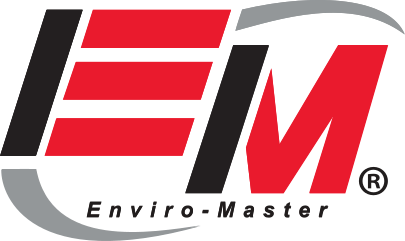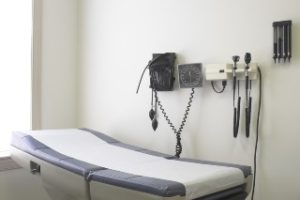Whether in a doctor’s office or in a hospital, medical exam rooms get a lot of use and are a hotbed for germs and bacteria. The patient could be a child with a sprained wrist, or an elderly person with complications from the flu. No matter who the patient is, they don’t want to leave the medical facility with bigger problems than when they arrived, thanks to germs and bacteria brought in other patients.
Health care-associated infections (HAIs) are illnesses people get after being treated at a medical facility. HAIs are blamed for tens of thousands of deaths and cost the American health care system billions of dollars each year. Infection prevention must be a priority to keep patients and staff safe and to protect your business. Designate a staff member to clean rooms after each patient. They should follow a thorough exam room cleaning checklist. Download your free form here.
Protect Staff
First, facility managers should stock gloves, gowns, face, and eye protection to protect staff who are responsible for cleaning up after each patient. Encourage staff members to take appropriate precautions before entering an exam room. Doctors and nurses should alert staff if a patient is bleeding, vomiting, coughing uncontrollably, or has any other condition that may require special cleaning instructions.
Remove Soiled Linens
A gown, sheet, or blanket used by a sick person can be harboring anything from the flu virus to MRSA and can be highly contagious. Carefully roll patient linens to avoid releasing microorganisms into the air or contaminating other surfaces in the room. Place linens directly into a hamper or bag and transfer to laundry services. Wash hands or change gloves after handling soiled linens.
Clean Up Fluids
Vomit, blood, urine, and other bodily fluids should be wiped up immediately, and the area thoroughly cleaned with EPA-registered disinfecting products. Spot clean walls that may have been contaminated. Fluids left behind may cause stains and offensive odors over time.
Disinfect Medical Equipment
Patients will spend most of their appointment sitting or lying on the exam table. Remove and discard any paper liner that’s covering the patient exam table. Wipe the entire surface with a disinfecting wipe and allow to dry. Cover table with a new disposable liner.
Use sanitizing wipes to clean any equipment that may have been used on the patient, including blood pressure cuffs, otoscope, or forehead thermometer.
Wipe Down Surfaces
Disinfect counters, sink, chairs, door handles, light switches, computer keyboards, and any other surfaces in the room. Common illnesses, such as colds or the flu, can be spread through touching or coughing. Viruses and germs may remain infectious for several hours. Properly cleaning high-touch surfaces will help stop the spread of infectious illnesses.
Check Hand Sanitizer Dispensers
If the patient exam room is equipped with hand sanitizer, make sure the container has enough product and is in good working order. Make a note on the exam room cleaning checklist if refills need to be ordered or if the unit is broken and should be replaced.
Sweep and Mop Floor
Exam room floors can also become incubators for germs and bacteria. Doctors, nurses, and patients can bring in germs on the bottoms of their shoes. A person who is coughing and sick with the flu also can spread the virus around the exam room. Coughing and sneezing can easily contaminate multiple surfaces, including the floor. Sweep and mop floor with disinfecting cleaner. Allow to dry.
After cleaning the room, wash hands thoroughly to prevent cross-contamination between the exam room and other parts of the medical facility. All office staff should be educated in basic procedures for preventing the spread of germs and bacteria.
Busy doctors’ offices and other medical facilities want to keep their patients and staff safe by following thorough cleaning procedures on the exam room cleaning checklist after each patient. A professional cleaning service, such as Enviro-Master, has hospital-grade products that will kill the germs lurking in your medical facility, and keep killing them for a week! The electrostatic spraying service is a weekly service that kills dangerous micro-organisms including norovirus, influenza, MRSA, streptococcus and more.
After all, people come to your office to get better, not to get sicker. And if a staff member gets sick, it can affect office productivity. Contact us for more information about Enviro-Master’s health and hygiene services.


